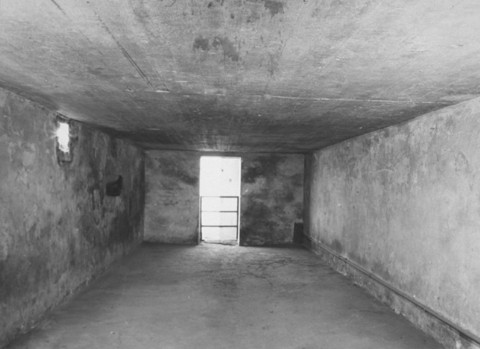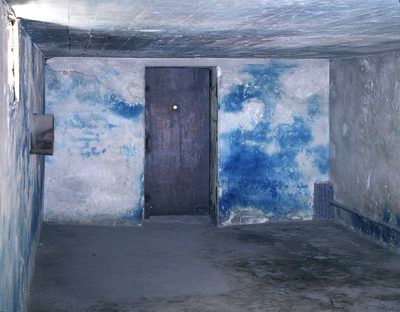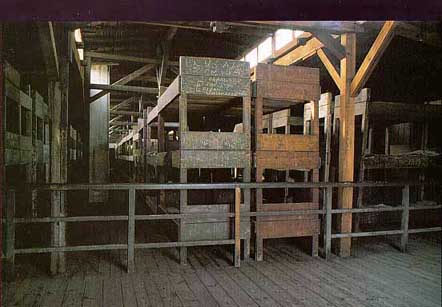[back] Holocaust revisionism
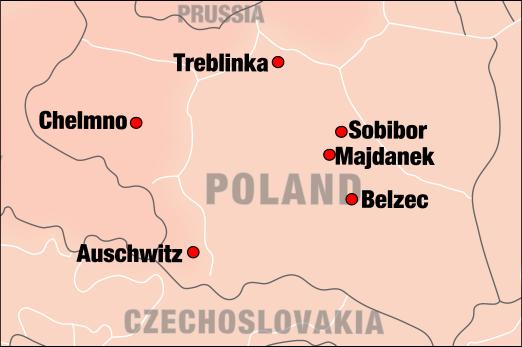
MAJDANEK
[back]
Holocaust
revisionism
See: Auschwitz-Birkenau Belsen Buchenwald Dachau Sobibor Treblinka
Concentration Camp Majdanek, A Historical and Technical Study, HOLOCAUST Handbooks Series, Vol. 5, © Theses & Dissertations Press, PO Box 257768, Chicago, IL 60625, USA, June 2003; together with Jürgen Graf
[Fred A. Leuchter] The 'False News' Trial of Ernst Zündel -- 1988
A Revisionist Monograph on Majdanek
Quotes
Leuchter agreed that he had designated one of the chambers at
Majdanek a delousing facility. Asked why a delousing facility would require a
peephole, he replied that it might be necessary to look into the chamber to see
clothing being fumigated, but he could not know for what purpose the individual
running the facility would be using the peephole. (32-9217) Leuchter pointed out
that the standard procedure for delousing in most facilities was to place the
Zyklon B material on the floor with whatever was in the room being deloused and
then close and seal the door. The only provision for putting Zyklon B into this
particular room was to place it on the floor by hand and close the door. He
stated that it became very obvious that it could not have been an execution
chamber because "no one is going to stand in a chamber while somebody with a gas
mask puts poison gas pellets on the floor and then leaves." (32-9219)
[Fred A. Leuchter]
The 'False News' Trial of Ernst Zündel -- 1988
Burg also visited Majdanek three times. He did find gas chambers in Majdanek,
but testified that they were disinfection gas chambers for liquidating lice and
fleas: bugs which caused epidemics. The chambers were standard in each camp and
had the German words "Attention! Poisonous Gas!" under a death skull. Zyklon B
was the new formula used to disinfect the clothing. It destroyed the bugs but
not the fabric. (25-6839)
After the war, Burg heard a lot about the allegations
that people were gassed at Auschwitz and Majdanek. He proved that it was either
out of stupidity or propaganda. Up to now, he pointed out, no document had been
found showing who gave the order for gassings, who built them and where they
were built. The German authorities especially had been called the "super-bureaucracism."
It therefore couldn't be that after all these years not a document could be
found. (25 6840)
[Joseph G. Burg] The 'False News' Trial of Ernst Zündel -- 1988
At the former Majdanek camp (near Lublin, Poland), Shermer said, he inspected a building that is shown off to tourists as a wartime killing facility, with a "big sign" identifying it as a homicidal gas chamber. This "reconstructed" chamber, he said, "makes no sense." Shermer said that he is "certain" that it was "not a homicidal gas chamber." He speculated that it might have been a non-homicidal delousing facility. (Such non-homicidal gas chambers, common in German camps, were installed to prevent deaths. They used Zyklon B, with poisonous hydrocyanic gas, to kill typhus-bearing lice in clothing.) Shermer ascribed the misrepresentation of this building to the "unprofessional" character of the staff there. "I suspect at Majdanek [that] if there were homicidal gassings, it was done on a small scale," he continued, albeit at other locations in the camp. He made no effort to defend the claim that one and half million people were killed at Majdanek. [1996] Debating the Undebatable: The Weber-Shermer Clash
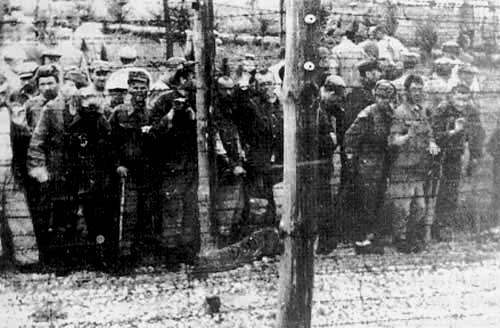
Russian POWs shown after Majdanek was liberated
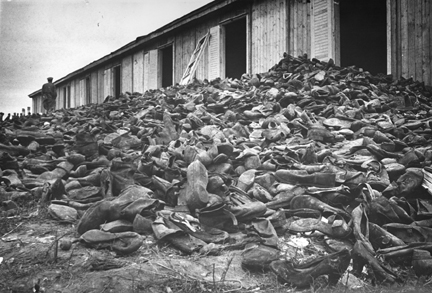
800,000 shoes were found in the Majdanek camp
The documentary film made by the Russians shows the 800,000 pairs of shoes which were found in the camp when it was liberated, but the narrator did not point out that Majdanek was a center for processing clothing taken from the Jews who were sent to the three Operation Reinhard camps at Treblinka, Belzec, and Sobibor. There was also a shoe repair shop at Majdanek where the prisoners worked on the boots of the German soldiers as well as the shoes taken from the Jews. When the camp was liberated these shoes were awaiting shipment by train to Germany where they were to be distributed to civilians in the German cities that had been bombed by the Allies. Some of the shoes from Majdanek are currently on display at the United States Holocaust Museum. The remainder are displayed at Majdanek in three warehouse buildings. Liberation
